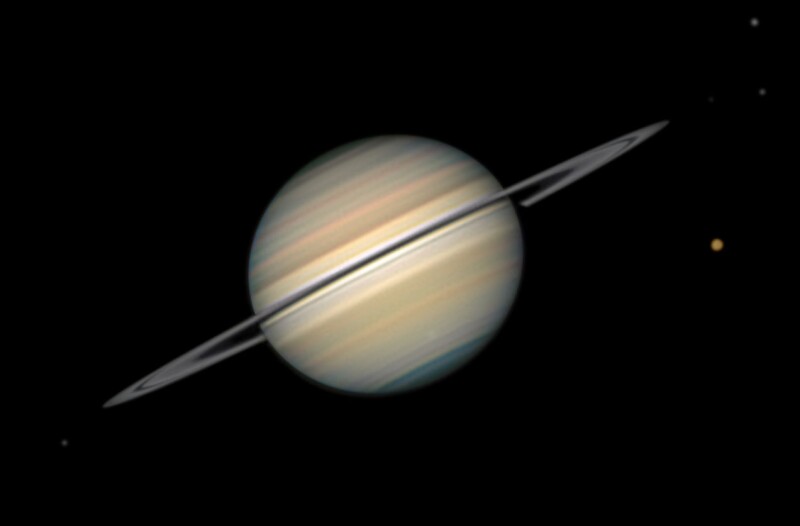As summer transitions into autumn, September brings a series of noteworthy celestial events. Stargazers can look forward to observing Saturn, which becomes prominent in the evening sky. On September 1, the planet will be visible around 10 p.m. in the southeastern sky, positioned approximately one and a half fists high. By the end of the month, Saturn will rise earlier, making it visible by 8 p.m.
A highlight of the month occurs on September 21, when Saturn reaches opposition. This alignment places it directly opposite the sun, allowing it to rise at sunset and remain visible throughout the night. Those with small telescopes will appreciate the striking appearance of Saturn’s rings, which appear particularly narrow this season. The rings’ orientation will make them resemble a thin toothpick through an olive.
In addition to Saturn’s prominence, the dawn of September 19 features an extraordinary double conjunction involving the waning crescent moon, the bright star Regulus, and Venus. The trio will come together closely, appearing less than a degree apart in the eastern sky.
The month also hosts both a total lunar eclipse and a partial solar eclipse. Unfortunately, neither event will be visible from the Americas. The full moon on September 7 will be named the Corn Moon, as this year’s Harvest Moon will instead occur in October, due to the proximity of the full moon to the autumnal equinox.
The autumnal equinox, marking the start of fall, takes place on September 22 at 1:19 p.m. Central Time. During this event, the sun crosses the celestial equator, resulting in nearly equal day and night lengths. This equinox heralds a seasonal change, as the sun rises due east and sets due west.
Aquila, the Eagle, serves as the featured constellation this month. Positioned in the southern sky after dark, Aquila hosts the bright star Altair, which is part of the prominent Summer Triangle asterism alongside Deneb and Vega. In Greek mythology, Aquila was the thunderbird serving Zeus, making this constellation rich in cultural significance.
For those interested in tracking these celestial events, the Stellarium Mobile app is a valuable resource. Available for both Android and iPhone, it allows users to identify current planets and constellations easily. A free September sky map and calendar can also be found at www.skymaps.com/downloads.html.
Several key events to watch throughout the month include:
September 1 – Venus appears just below the Beehive star cluster in Cancer at dawn. Binoculars can enhance the view of this celestial pairing.
September 7 – The full Corn Moon rises at local sunset and sets the following morning. While the eclipse will not be visible from the Americas, live feeds can be accessed online.
September 14 – The last quarter moon will be positioned due south at sunrise.
September 19 – Witness the close conjunction of the waning moon, Regulus, and Venus at dawn, visible to the naked eye but enhanced with binoculars.
September 21 – The new moon will align with the sun, becoming invisible during the day. On this day, Saturn will shine brightly at opposition, found in the southeastern sky below the Great Square of Pegasus.
September 22 – Celebrate the autumnal equinox as the sun crosses the celestial equator.
September 29 – The first quarter moon will rise high in the southern sky at sunset.
As September unfolds, it offers a magnificent array of celestial phenomena, making it an ideal time for stargazing and exploration of the night sky. Clear skies are wished for all who venture outside to witness these spectacular events.





































































